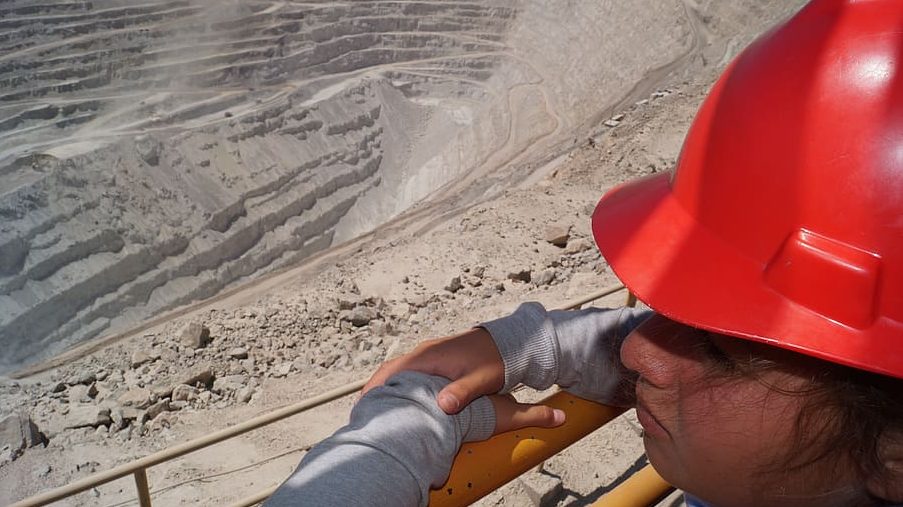As technological capabilities and societal expectations continue to evolve, so too does the mining industry. Mines are increasingly utilizing technology to improve efficiencies, boost transparency, ensure worker safety, access previously unattainable areas and run more environmentally sustainable operations. These advancements take the form of data collection and analysis for better decision making as well as hardware and robotics to be utilized in physical work. Not only are existing mines transforming, but new mines are being designed from inception with these advanced processes in mind.
Keeping up with modern practices not only requires substantial capital investment in technology itself, but also the development of a workforce suited to the challenges of transition. Engineers and skilled tradespeople must be recruited who are capable of navigating the road ahead. While change of any kind can be daunting, in this case the potential rewards make the journey worthwhile.
Data Analysis for Better Decision Making
An industry trend report issued by Deloitte provides an overview of mining objectives with regards to data.
“The ultimate goal is to leverage advanced algorithms, AI, and machine learning to turn data into insights that allow companies to reduce their capital expenditures, respond to changing project requirements quickly, and optimize mine planning to integrate real-time changes.”1
The collection of this data throughout mining operations is enabled by a network of sensors which will communicate via the IIoT (Industrial Internet of Things). This vast network of data collection involves increasingly sophisticated monitoring devices, including wearable technology. Artificial Intelligence will transform this data into actionable plans used to assess risk, create more efficient processes and even take advantage of marketing opportunities within the supply chain. The data will also provide more immediate functions, such as real time safety alerts and tracking of equipment and personnel movement for logistical functions.
“Correcting issues with mineral processing has always been more reactive than proactive,” according to the website of equipment manufacturer Komatsu. “With dynamic information early on through interconnected digital systems and software, quick course corrections can be made before problems surface. Advanced digital process and control systems enable continuous monitoring and virtual simulations, among other cutting-edge capabilities.”2
Robotics, Drones and Autonomous Vehicles in Mining
It’s not only data that’s evolving as a result of improving technology, but the physical work of mineral extraction as well. Drones are being deployed to hazardous areas, while autonomous vehicles and other forms of robotics are being utilized to create efficiencies and eliminate more mundane tasks. 3D printers are enabling the speedier replacement of spare parts. All of this will enable extraction in areas previously deemed inaccessible, a necessity according to the World Economic Forum.
“As world-class mineral resources in low-risk areas become exhausted, mining companies must either master new technologies for extraction and processing, or venture into frontier areas where extraction has not previously been economically viable.”3
Social License for Mining
Another benefit provided by technology is transparency. With heavy scrutiny on mining operations, companies are utilizing data collection and blockchain technology to shed light upon practices.
“Blockchain can potentially offer reassurance to regulators and consumers that mining companies are meeting compliance and acting responsibly.”2
Modern Mining Workforce
In mining, as in other advanced industries, skilled workers will be required not just to ‘use’ technology, but to effectively integrate with it. Workers will utilize biomechanical support for increased strength, use augmented reality to integrate information, will train using VR, will monitor their health using wearable sensors, and will use interfaces to connect with machines, as well as one another.4
“Constantly evolving technologies and business models will require mining company employees to develop new skills,” writes the World Economic Forum. “The sector will have to increasingly compete with the IT sector to attract top talent from universities in order to drive its digitization and automation processes.”3
The skilled workers and engineering leaders of tomorrow will be those who are capable of understanding and functioning in unison with this technology at the mine site, at mine head offices and within the companies supplying this technology. Along with the obvious premium on STEM-related skills comes an imperative to recruit individuals who are comfortable adjusting to ongoing change, while solving problems on a day to day basis.
There will be difficulties: many manual laborers will be displaced, and along with that will come backlash from residents of areas where mines are located. It will be up to progressive mining companies to create solutions that work not only for the company itself, but that satisfy environmental and workforce concerns. The only thing constant, of course, is change. With the challenges facing the mining industry, there is no choice but to move boldly into the future.
Cited Sources
1 “Tracking the Trends: Deloitte: Energy and Resources: Mining.” Deloitte, March 5, 2020. https://www2.deloitte.com/global/en/pages/energy-and-resources/articles/tracking-the-trends.html
2 “The Future of Mining: Four Trends for Tomorrow’s Success.” Komatsu. Accessed March 10, 2020. https://mining.komatsu/blog/details/the-future-of-mining-four-trends-for-tomorrows-success
3 Maennling, Nicolas, Perrine Toledano, Columbia Center, Columbia Law School, Extractive Industries, and Columbia Center. “Seven Trends That Will Shape the Future of Mining and Metals.” World Economic Forum. Accessed March 10, 2020. https://www.weforum.org/agenda/2019/03/seven-trends-shaping-the-future-of-the-mining-and-metals-sector/
4 L. Abrahamsson-B. Johansson-J. Johansson-J. Lööw-B. Johansson-E. Andersson-J. Johansson-P. Darling-H. Kagerman-W. Wahlster-J. Helbig-H. Lasi- Feld- Hoffmann-U. Dombrowski-T. Wagner-P. Kopacek-J. Lee- Kao-S. Yang-T. Horberry-R. Burgess-Limerick- Steiner-U. Bodin-C. Grane-J. Lööw-L. Abrahamsson-J. Johansson-H. Kern-M. Schumann-R. Blauner-M. Polanyi-L. Bainbridge-J. Rifkin-H. Braverman-E. Wenger-L. Abrahamsson-S. Lysgaard-P. Hoonakker-C. Korunka- Feki-F. Kawsar-M. Boussard-L. Trappeniers- Alam- Hamida-R. Roman-P. Najera-J. Lopez-M. Ghobakhloo-J. Howe-U. Holtgrewe-B. Johansson-J. Johansson-L. Abrahamsson-M. Nygren-M. Jakobsson-E. Andersson-B. Johansson- Pdp- Kemper- Lj –
“Mining 4.0-the Impact Of New Technology from a Work Place Perspective” https://link.springer.com/article/10.1007/s42461-019-00104-9




